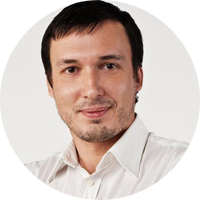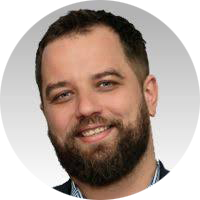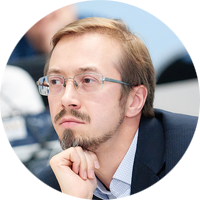The blockchain program committee or how to fight off the ICO

It is no secret that holding a professional conference requires a lot of preparatory work. The most important part, without which nothing at all will work out, of course, is the work of the program committee . This work does not end at the stage of screening out advertising reports and reports for beginners or too highly specialized, but includes such careful questioning of candidates so that nothing valuable is lost due to the banal inability to accurately express it, and vice versa unripe work does not slip through beautiful words.
In the case of DeCenter TokenConf, we received a variety of applications for ways to collect crypts for the most remarkable goals from which five more conferences could be held, and all of them were rejected ...
There is no doubt that in order for the program to receive thematic integrity , the qualifications of the program committee must be high. Today we decided to talk about those people on whose opinion we relied in an effort to make a conference for developers who are interested in applying powerful new technology to solve their business problems, and not to earn easy money.
')

The most active among the members of our program committee is the engine of the blockchain technology - Dmitry Plakhov . For about 10 years, Dmitry has been participating in work on distance learning systems, including developing his own projects. He is the coordinator of the blockchain-developers community in St. Petersburg, which holds monthly meetings on the development and introduction of technology, and promotes cooperation with leading technology companies, universities, business incubators, and other development activities.
Unlike the other members of the committee, Dmitry believes that soon the blockchain will spread everywhere, and during the formation of the program I would like to pay special attention to the importance of the planning period of the technical architecture of the project. In decentralized systems, errors are not as easily corrected as in client-server applications.
Carrying out mitapes and hackathons in St. Petersburg for a year already, Dmitriy began to work with confidence in the success of the conference and believes that the accepted reports and their authors speak for themselves. In our opinion, his attitude: “ who, if not us , will create a culture of blockchain development , just as a C programming culture or OOP culture was created”, played an important role in the fact that the program turned out to be of such quality.

Mikhail Chekanov regularly participates in our program committees, because with twenty years of experience in web technologies, product management, projects and teams can conduct an examination of various areas. After the global project “Sochi 2014”, Mikhail got a little bored with developing Internet services, and from the first thorough immersion into the blockchain technology, the same feeling of a frontier arose as after the first session in a netscape. Brave new world has tightened and now Michael is a co-founder and director of a company that is developing blockchain solutions and smart contracts for the corporate and public sector. Therefore, it is not surprising that he considers fintech and state services to be the most promising direction of technology development, and believes that in a couple of years the blockchain will be under the hood of so many services, especially in b2b solutions , but everywhere and everywhere it is not needed.
Since Mikhail has been working with our conferences from the very beginning, he didn’t have any special doubts that he’d get a hardcore conference with a discussion of “boring” technological problems. For his part, he aimed to collect a good series of reports on technologies from the HyperLedger stack , which he successfully implemented.
With all his solid experience, Mikhail does not cease to be amazed at the variety of topics concerning Bolkchain. Indeed, besides specific platforms, by and large, the projects use almost the entire stack of traditional web technologies , and sometimes this is not the most trivial way. During the discussion in the program committee, exclamations sounded several times: “What, is this really a problem?” - and in response, “yes, and some more!”
Answering the question, what was the impression of the program, Mikhail said: “We practically will not have educational program on the air and other public platforms, there will be interesting narrowly targeted reports. For me personally, it will be interesting to listen to developers of platforms Fabric, Exonum and Iroha , more exotic for us. Unfortunately, not all potential speakers were able to reach, some interesting solutions had to be left behind. And it is impossible to embrace the immense, the zoo of solutions is just gigantic, and many exist only on paper, as a rule - white. ” Therefore, the conference must be repeated, because everything is just beginning.

The main area of interest of our third judge Igor Bespalchuk is the architecture of various systems and directions and their design methodology. In addition to working at CUSTIS, he conducts a regular course on basic practices of software architect at Luxoft Training Center, therefore he oversaw the relevant section of the conference.
Although, so far, Igor does not use blockchain technology in his work, the emergence of a huge industry cannot leave anyone indifferent, and he watches this movement with interest, trying, like many, to make some predictions.
For example, that a bundle of bitcoin + LightningNetwork or Ethereum + Plasma will become common infrastructures and will be able to provide very fast and at the same time secure decentralized payments, and this can really shake the financial sphere.
In addition, Igor is confident that several ideas will manifest themselves, which for the time being we even find it hard to imagine . After all, right now, in this emerging industry there are so many interesting teams, products, and research areas.
Getting to the work of the program committee, Igor was sure that a strong list of participants would gather, and now, when the program deliberately included only the topics " for developers, from inside technology, " he believes that the conference will work with his special and recognizable face. And then, with some regret, notes that it was not possible to include in the program a huge number of terribly interesting topics that were outside the chosen highway. Let's see, maybe next time we will make the coverage wider.
And now, since we talked about the TokenConf program , we will partially describe it so that you yourself can decide whether we succeeded in implementing our plans and prepare an engineering conference about the blockchain only.
By the way, these are not all the members of the Program Committee - the fact that we had to cut out 4/5 of the submitted reports was so upsetting Sergei Pavlov that he did not have time to answer the questions. Anyway, thanks a lot to him!
Platforms
So we conditionally denote the first batch, although there is not only for them, but also about the adjacent technologies.
The report by Alexei Yermishkin from Virgil Security will be about Merkle trees , whatever they are, their main use and the little-known way of using these trees to build secure data structures using Coniks and Google's Key transparency as an example. The second part of the report will be devoted to the NoiseSocket protocol , which can become the only universal network protocol for all blockchains without exception. Intriguing, is not it?

The discussion of the speed of blockchain engines will be discussed in the report by Sergey Prilutsky (MixBytes). First, we will discuss the features of the basic schemes and the algorithms that are trying to combine the advantages of various kinds of consensus and remove the disadvantages. And then, as a concrete example, consider the Graphene engines and the consensus delegated proof-of-stake.
Alexander Borgardt from GolosCore will continue the theme by diving deep into Graphene. In order to understand how the system functions at a high level, it is also necessary to understand what is happening at each of the underlying levels. The code base of the Graphene blockchain is no exception, therefore in the report .
- Consider the features of platform- specific serialization as a mechanism for storing data on a hard disk.
- We will touch the principles of the device and storage of indexes .
- Let's talk about the mechanisms of network interaction and how to keep it within certain limits.
- Without attention will not be left and the model of competitive performance in Graphene.

Report by Anton Nikonorov from Enecuum “ Scaling problems. How to disassemble 1 million transactions per second "can be considered generalizing, since It promises a review of best practices .
B - security
About smart contracts and their security four reports at once. So do not say later that we did not warn you!
Alexander Nikolaev (Forseti) will tell you why programming safe smart contracts is still difficult, and solidity is not equal to javascript. Understands the main types of bugs in smart contracts, methods of protection, as well as the subject of tools for protection.
Digital Security's Igor Burbygin will also suggest using some publicly available tools for finding bugs and vulnerabilities . Separately, the themes of using symbolic execution and fuzzing of contracts, which Igor considers very promising, will be revealed.
Dmitry Mishunin from HashEx will present a look at popular mistakes through the eyes of a smart contract security auditor with solid experience in more than 50 audits per year. First, the goals and structure of the audit will be shown, secondly, the ways of using the report received , as well as answers to the hottest questions.
So that we do not fall into paranoia solely on the subject of security, Mikhail Savchenko from Chronobank promises to consecrate several aspects of the implementation of decentralized applications:
- Secure smart contract development.
- The architecture of renewable smart contracts.
- Smart contract code optimization.
- Development of modular decentralized applications.
- Optimization of decentralized applications.
- Authorization in decentralized applications.
- Caching and analytics in decentralized applications.
In a word, come ! We must not miss the opportunity to influence the development of technology at the very beginning of its full formation.
Source: https://habr.com/ru/post/349226/
All Articles